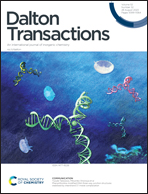Metal–organic framework-derived Cu nanoparticle binder-free monolithic electrodes with multiple support structures for electrocatalytic nitrate reduction to ammonia†
Abstract
Electrocatalytic nitrate reduction to ammonia, which removes nitrates from aquatic ecosystems, is a potential alternative to the classical Haber–Bosch process. Nevertheless, the selectivity of ammonia is often affected by the toxic by-product nitrite. Here, the polyhedral-supported Cu nanoparticle binder-free monolithic electrode (Cu-BTC-Cu) is synthesized by the in situ electroreduction of Cu metal–organic framework (Cu-MOF) precursors. The Cu-BTC-Cu displays a high ammonia yield of 4.00 mg h−1 cm−2cat and a faradaic efficiency of 83.8% in 0.05 M K2SO4 (pH = 7), greatly outperforming the rod-supported (Cu-BTEC-Cu) and unsupported (Cu-BDC-Cu) Cu nanoparticle monolithic electrodes. Impressively, the Cu-BTC-Cu can inhibit significantly the release of by-product NO2− and present favourable stability after 10 consecutive cycles. These preeminent properties can be attributed to the polyhedral structure, which enables better dispersion of Cu nanoparticles and brings more active sites. Moreover, the reaction mechanism of Cu-BTC-Cu is analysed by electrochemical in situ characterization and several key intermediates are captured. This work provides new insights into the modification of the electrocatalytic nitrate reduction activity of Cu-based catalysts and ideas for the design of high-efficiency electrodes.



 Please wait while we load your content...
Please wait while we load your content...